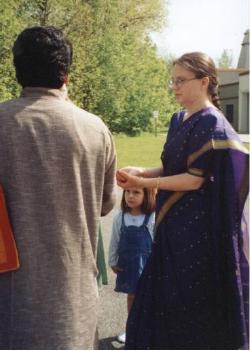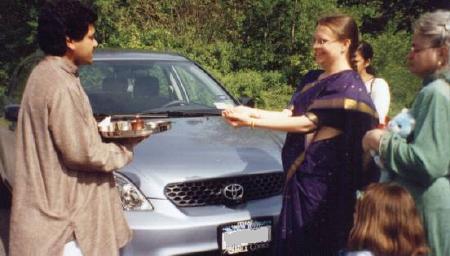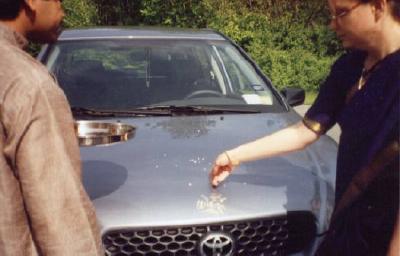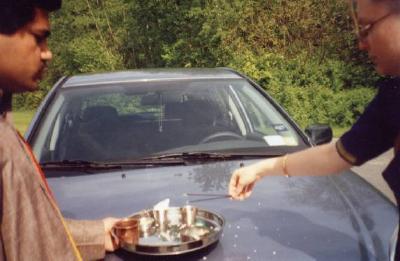
What is a car puja? A car puja is a Hindu ceremony blessing a car so as to keep it from bad influnences and to bless it in God's name.
Why is this done? Basically, Hindus bless all implements or items to be used which are used for daily life. This is true of things like Homes, Cars, Motorized vehicles of all types, and home implements like appliances (mixers, grinders, stoves, tvs, stereos, etc.).
When is this done? It is done at the inception of the implement- like when one buys a new car, home, etc. People try to do the puja before using the implement, but this is not always done now a days. So long it is done soon as possible after it's purchase is ok. Concluding the first puja, yearly there is a festival called "Vijaya Dasami". On this day, every October/ November (before Diwali), Goddess Saraswathi is worshipped. Goddess Saraswathi, pictured to the left, is the goddess of learning. On this day, not only are implements, vehicles and appliances worshiped, but also books as for the Goddess of Learning. Children await this day, since they get a break from studies!







